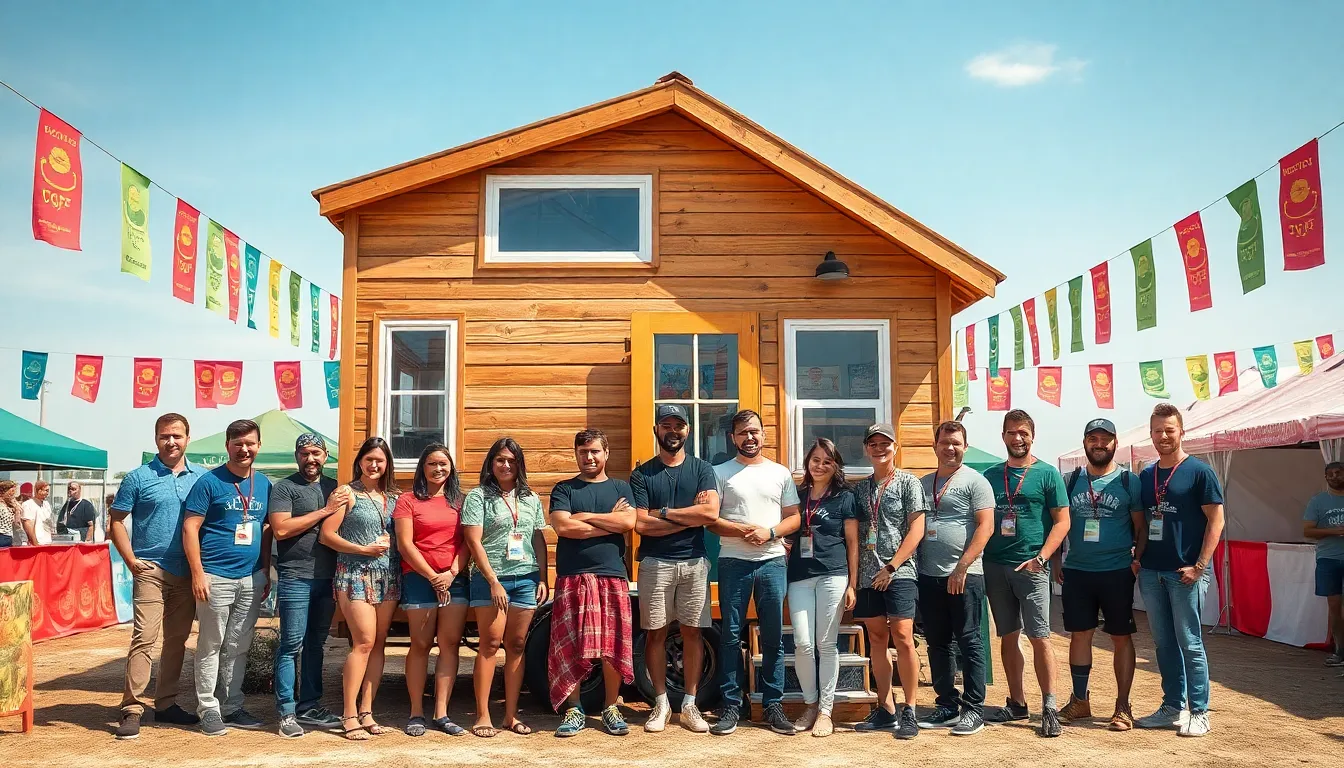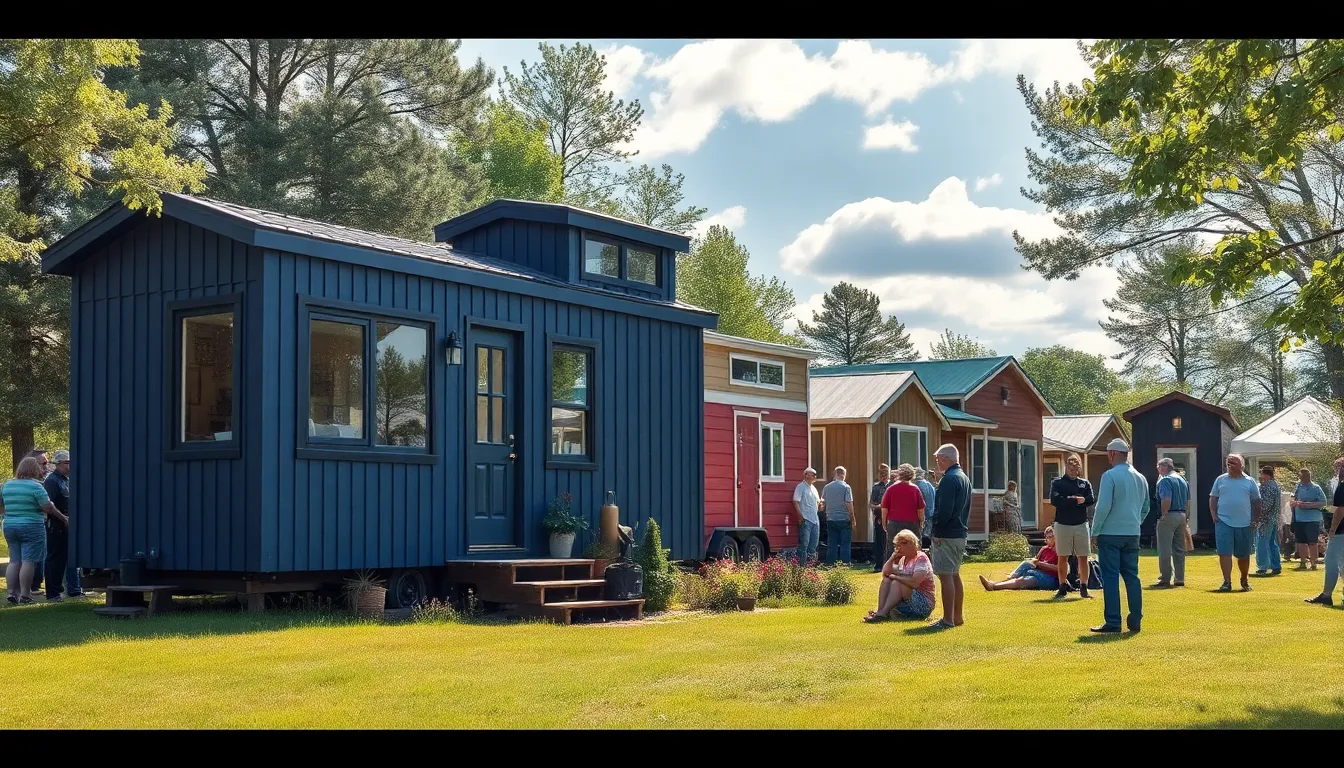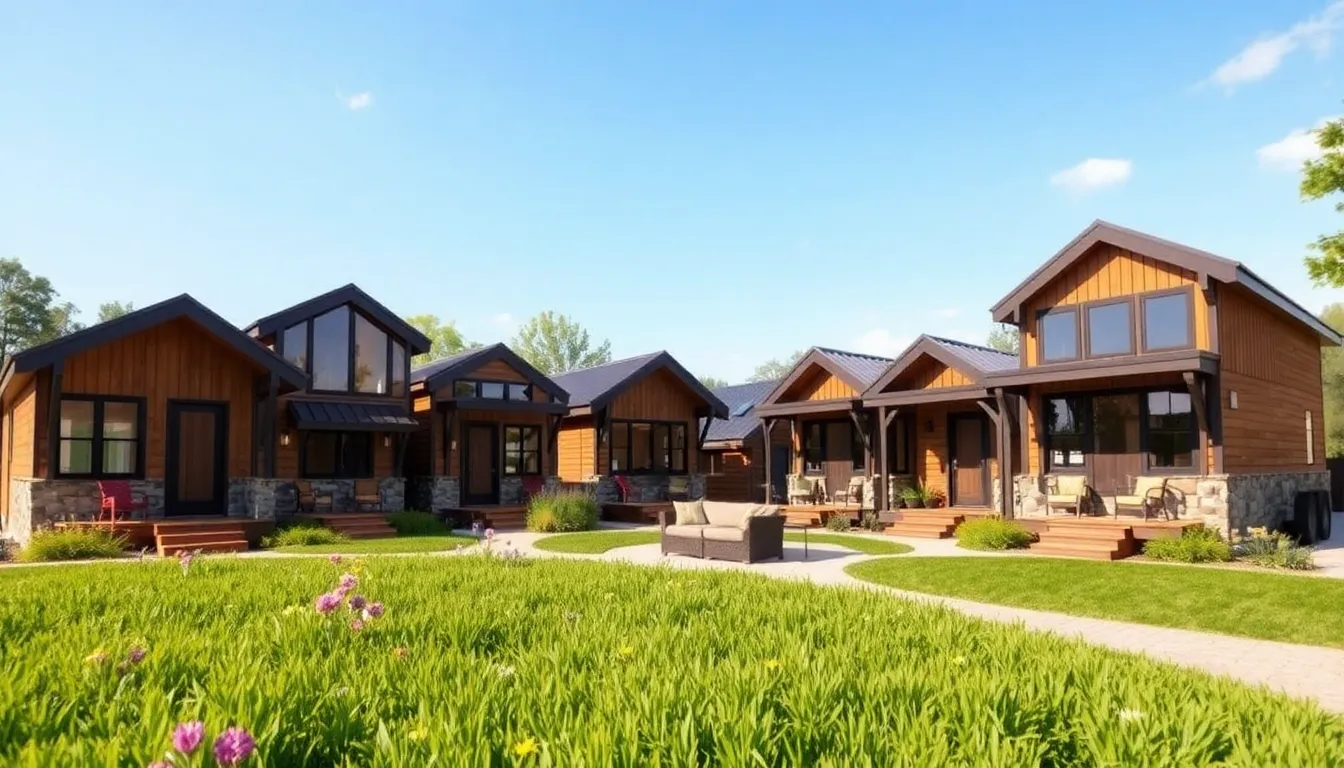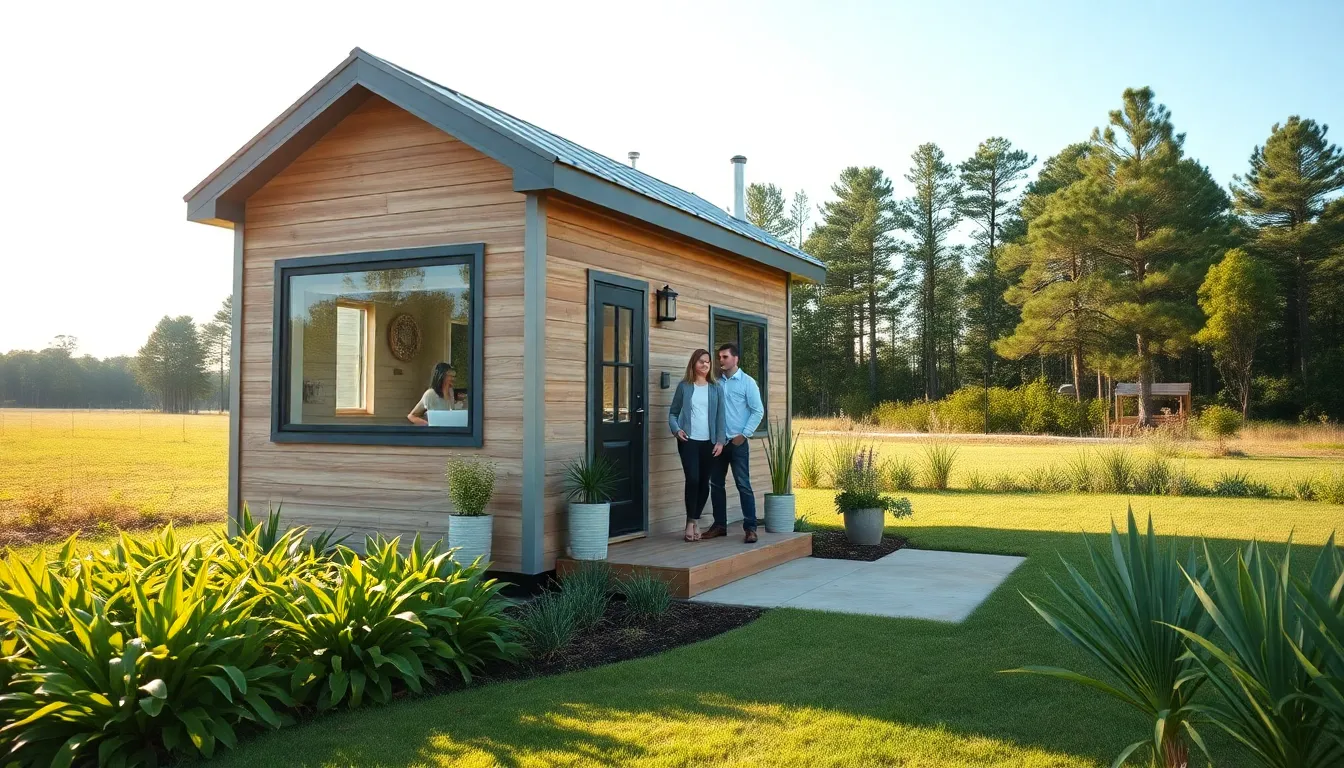In a world where bigger often means better, tiny house competitions are flipping the script and proving that good things really do come in small packages. These quirky contests celebrate creativity, sustainability, and the art of living large in a pint-sized space. Picture this: ingenious designs, clever storage solutions, and a dash of whimsy all packed into homes that could fit in your backyard.
Table of Contents
ToggleOverview of Tiny House Competitions
Tiny house competitions emphasize the benefits of compact living, showcasing creativity and sustainability through innovative designs. These contests inspire participants to explore efficient living solutions while contributing to the growing tiny house movement.
Definition and Purpose
Tiny house competitions are events where participants design and build small homes within specific size constraints. The primary purpose is to promote the idea that smaller spaces can offer practical, sustainable living. These competitions encourage creativity, challenge participants to think outside the box, and demonstrate diverse design possibilities. Many contestants adopt eco-friendly practices, highlighting ways to reduce environmental footprints while maximizing functionality. Judges evaluate entries based on creativity, efficiency, and design appeal, fostering a community excited about innovative living.
Popularity and Growth
Participation in tiny house competitions has seen significant growth in recent years. Interest in minimalism and sustainable living fuels this trend. As urban populations rise, many are drawn to affordable housing solutions offered by tiny homes. Competitions attract diverse participants, from seasoned builders to amateur enthusiasts, reflecting a broad range of perspectives. Hosting locations span various countries, increasing visibility and inspiring more individuals to consider tiny homes. Social media platforms amplify these events, allowing enthusiasts to share their experiences and showcase their designs, ultimately contributing to the movement’s popularity.
Notable Tiny House Competitions
Tiny house competitions showcase innovative design and sustainability. Various events attract participants eager to demonstrate their creativity within strict size limits.
The Tiny House Competition
The Tiny House Competition promotes unique design solutions while emphasizing efficient use of space. Contestants create compact structures under 400 square feet, incorporating elements that reflect personal style. Judges evaluate submissions based on creativity, functionality, and aesthetics. Past entries featured innovative storage, eco-friendly materials, and smart technology, proving that small living doesn’t compromise quality. This competition inspires individuals to rethink their living arrangements while aligning with the tiny house movement’s core values.
The National Tiny House Jamboree
The National Tiny House Jamboree gathers tiny house enthusiasts from across the United States. This annual event highlights tiny living through workshops, demonstrations, and unique tiny house displays. Participants explore various tiny home styles and learn about building techniques and sustainability practices. More than 60 tiny homes are typically showcased, offering insights into diverse design choices. The Jamboree unites a community passionate about affordable housing and downsizing, creating a platform for knowledge sharing and collaboration.
Benefits of Participating in Competitions
Participating in tiny house competitions offers numerous advantages, enhancing skills and fostering community connections.
Skill Development
Competitions serve as a platform for contestants to refine their design and construction skills. Participants encounter real-world challenges that require innovative problem-solving techniques. Exposure to sustainable practices and eco-friendly materials enhances participants’ knowledge and capabilities. Learning from experienced judges and peers occurs through constructive feedback during the evaluation process. Additionally, engaging in these competitions encourages participants to improve their time management, project planning, and teamwork skills.
Community Engagement
Tiny house competitions help build a supportive community around sustainable living. Enthusiasts connect with like-minded individuals who share a passion for minimalism and affordable housing. Attending these events fosters collaboration, inspiring participants to exchange ideas and resources. Networking opportunities arise from shared experiences, with participants forming lasting friendships and mentorships. Communities grow stronger as they advocate for tiny living, creating a larger movement that prioritizes sustainable choices and affordable housing solutions.
Challenges Faced by Participants
Participants in tiny house competitions encounter various challenges that test their skills and creativity. Navigating these obstacles often defines the experience.
Design Limitations
Participants face strict design limitations that influence their creativity. Structures typically must remain under 400 square feet, pushing contestants to maximize functionality. Innovative storage solutions become essential, with every nook and cranny needing to serve a purpose. Constraints on materials also exist, as sustainability frequently guides design choices. Creativity shines through when competitors find ways to incorporate eco-friendly elements while adhering to size restrictions.
Budget Constraints
Budget constraints often determine how far participants can push their designs. Contestants frequently work within limited financial resources, compelling them to make smart choices. Sourcing affordable materials without compromising quality proves challenging. Competitors might opt for DIY solutions to save costs during construction and maintain budgetary discipline. Many participants benefit from sponsorships, which can ease financial burdens, yet securing funding remains a complex task.
Conclusion
Tiny house competitions are more than just contests; they represent a shift towards sustainable living and innovative design. By challenging participants to think creatively within size and budget constraints, these events foster a community dedicated to minimalism and eco-friendly practices.
As interest in tiny living continues to grow, these competitions serve as a vital platform for sharing ideas and showcasing unique solutions. They inspire individuals to embrace smaller spaces while highlighting the importance of affordability and sustainability in housing.
Ultimately, tiny house competitions not only spotlight remarkable designs but also encourage a movement that values efficiency and community connection.








